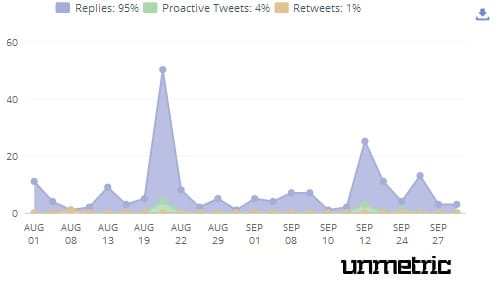5 Ways Singapore Banks Leverage Social Media
A significant part of Singapore’s economy is dependent on the Banking and Finance Industry. Singapore acts as a financial hub for South East Asia and many international banks have set up their headquarters due to its excellent geographical location – most of the Asian market is a 7 hour or less flight away. While we all know that banks are experts at wealth creation, it turns out that they are pretty savvy on social media too.
At Unmetric, we are always keeping an eye on the social media habits of brands and look to understand what is working and what isn’t. The banks from Singapore came up on our radar for their social media presence which we felt other brands could learn from.
After diving deep in to what these banks were doing, we have compiled the top 5 key takeaways from the Banks of Singapore on Social Media performance across Facebook, Twitter & YouTube.
Run Contests Frequently
The words free, travel, voucher and prizes resonate really well amongst Facebook users. Posts that contain these words are always among the list of most engaging posts for each brand. Contest posts usually come with a call to action, for example “Like this page” or “Share this post”, thereby increasing the reach of the brand and in turn increasing the engagement score. For example, a post by Standard Chartered which urged the users to share the post received an engagement score of 32 and made it to their top 10 most engaging posts out of 48 posts in total.
Happy ‘Valenbirthaversery’ day!
It is common for brands to leverage holidays and festive seasons by sharing a post with some inviting graphics. These kinds of posts create a considerable amount of engagement, but one must also be aware of the habits and customs of the locals during festive holidays in order to see maximum engagement. For example, Maybank promoted their free cash withdrawal service during Hari Raya which was celebrated around the first week of August. Maybank was able to capitalize on this event because that’s when the locals convert their Singapore dollars to the Malaysian ringgit for their annual visit to Malaysia. This post received an engagement score of 168 and attracted more ‘Likes’ than their other posts. By comparison, their average engagement score for the period analyzed is just 21, which shows the contrast in performance between a post leveraging a festival or celebration and a regular post.
Upload on YouTube, but share across all platforms
Very often in our research, we find that a video can perform differently on different platforms. The best practice is to share the video across all the platforms available rather than sticking to YouTube and hoping people find it there.
For example, a video uploaded by Visa, “Travel Happy with Visa”, only received around 1,400 views on YouTube, while the same video when uploaded (and not embedded from YouTube) on their Facebook page received around 3,000 Likes and close to 500 shares, which is much higher than the reach the video received on YouTube. The Visa Facebook page has close to 28,000 fans and the Visa Asia Pacific YouTube channel has only around 140 subscribers, so the chances of the video being viewed more are on Facebook, so don’t forget to leverage that extra reach!
Hashtags! Hashtags! Hashtags!
Hashtags help in organizing a piece of micro content into different topics of conversation, help a brand be a part of the wider conversation and also allows a brand to capitalize on pop culture trends where appropriate. One such bank that uses hashtags effectively is DBS.
DBS regularly posts updates on the hashtags they use for customer support and specify which hashtag has to be used depending on the type of query the user has. #askdbs is the hashtag that they are currently using for general banking questions and received an engagement score of 102 for the period analyzed. For questions or promotions of their mobile banking application, DBS uses the hashtag #DBSmbanking which received an engagement score of 141. Finally, the hashtag #dbstip is used in tweets which give customers and the general public tips and tricks on safe banking, and is the best performing hashtag from DBS, receiving an engagement score of 148.
In our past studies, we have noticed that the best performing hashtags tend to be campaign related and see an engagement score of around 400. Even though DBS hashtags get much lower engagement, since they are more around customer support and advice, we consider their engagement score to be very impressive.
Invest in a dedicated customer support team
Some brands use automated response systems for various reasons like tight budgets, keeping their average reply time low or to constantly bombard users’ news feeds. The practice isn’t new, it’s been reported that close to 40% of social networking accounts are spam, but we’re surprised to see some big brands that are employing canned responses as part of their customer outreach program on social media. However, in Singapore it looks like banks have taken a more serious approach with real people behind the tweets.
In this case, CIMB stands out in responding to customers, giving them personalized responses to ensure the issue is being addressed rather than a “we’ll get back to you soon” message. This improves customer satisfaction as it’s often a one step process to get the problem or question resolved. CIMB replied to 344 tweets which constitutes close to 95% of their total tweets.

Banks from Singapore have more than an amazing geographical location; they also have an admirable social presence. Brands that want to learn a thing or two about social media tactics should take a note how these banks attend to customer queries using hashtags, have a dedicated customer support team, leverage festivals in the right way to promote their products and services, and share content across all platforms.
Methodology
Unmetric compiled its report by sourcing data from its social media benchmarking platform. All statistics were gathered from August 1st-September31st, 2013
The Engagement Score is calculated based on the number of user interactions (Comments, Re-tweets etc.) and Estimated Impressions each tweet or post gets. It enables easy comparison regardless of fan numbers. Gain access to all this data by claiming a free 6 day trial.
The article first appeared on Business 2 Community and Digital Market Asia.


